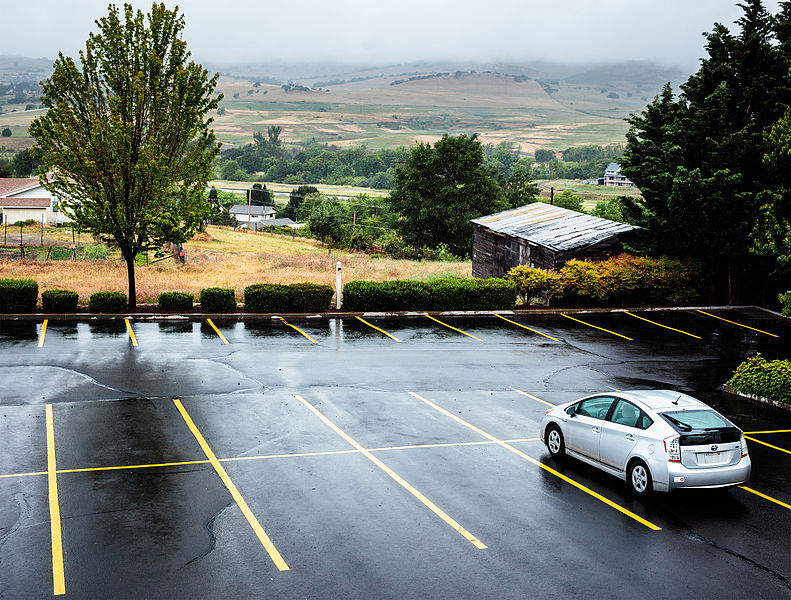The Antidote to Parking Oversupply

Parking is one of the most potent political issues in American cities. Citizens value having parking that is cheap and available in places they need to go. Politicians respond to this demand, either by providing subsidized public parking spaces or mandating private landowners provide it as part of the zoning code. Due to the ubiquity of public parking, parking consumers rarely pay market rates for the services they consume. In parking as in other goods, we can expect an oversupply of the subsidized product.
A new report for the Research Institute for Housing America demonstrates this political dynamic. Data scientist Eric Scharnhorst compiled a comprehensive parking inventory in five American cities: New York, Philadelphia, Seattle, Des Moines, and Jackson, Wyoming. The parking market in each city looks different, with different fractions of the inventory composed of parking lots, parking garages, and on-street parking spaces. The number of spaces per household ranges from less than one in New York to more than 20 in Jackson.
Generally, parking was especially oversupplied in the two smaller cities. In both Jackson and Des Moines, surface parking lots dominate the market, composing between 80 and 85 percent of parking inventory. This is indicative of minimum parking requirements forcing new structures to include parking even if parking is already ample in the neighborhood.
New York provides a unique case of a city where public parking spaces form the bedrock of the city parking market. In New York, more than 65 percent of parking consists of on-street spaces. The city has by far the fewest parking spaces per household, and the lowest parking cost per household of the five cities, unsurprising in America’s most transit-dependent city. Widespread reliance on-street parking rather than market-rate parking in off-street garages in an extremely dense city implies an underpriced service, a public parking subsidy for car-owning New Yorkers.
Philadelphia and Seattle have more balanced parking markets that still experience a general oversupply. In Philadelphia, surface lots remain widespread, and usage rates have fallen since 2005. Seattle provides an example of an acute oversupply of structured parking in its densest downtown neighborhoods.

This data demonstrates that parking is not supplied in line with demand in cities large and small. Parking is not managed efficiently. If 25 percent of a product is rarely used, the solution is not to mandate more of it every time a new consumer joins the market, as happens with minimum parking requirements.
Better city parking management would have two components. First, pricing street parking at market rates. This would level the playing field between publicly owned curbside spaces, private owners of parking structures, and owners of buildings that include parking as an amenity.
Second would be removing parking requirements or changing the way they are applied. Removing parking requirements is generally good urban policy. So long as there isn’t competition from a substantial amount of subsidized public spaces, developers would internalize the cost of parking and either provide it onsite or direct their tenants to other private parking structures and lots.
An alternative would be to change the way parking requirements are applied. Cities can set objective rules about the availability of parking in any neighborhood. Where enough parking is on the market, all parking requirements would be suspended for new developments until the number of households becomes large enough that parking scarcity returns. This could address the general oversupply in Jackson and Des Moines, as well as the more localized parking surplus evident in downtown Seattle.
Reforming parking policy is an important local issue. Current politics encourages a general oversupply of parking and with it high parking costs per household as it sits empty. Ending subsidies that favor public street parking and suspending parking requirements in places where parking is plentiful would be two steps in providing parking in amounts and in places where it will actually get used.










